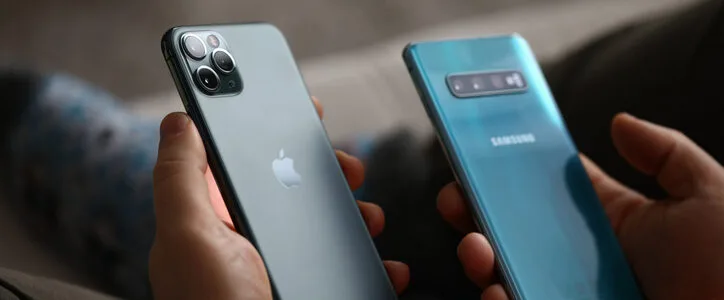The legal clash between tech titans Apple and Samsung over design patents was a landmark event that sent shockwaves through the industry. The case also raised awareness among consumers about design patents and their role in protecting innovation. Here’s a deep dive into this multi-year, multi-jurisdictional dispute.
Background of the Case
Days before the iPhone’s unveiling in 2007, Apple strategically filed for four design patents protecting the iPhone’s fundamental shape. This was followed by a comprehensive filing in June, encompassing a color design patent covering 193 screenshots of the iPhone’s distinctive graphical user interfaces. These filings, alongside Apple’s existing utility patents, trademarks, and trade dress rights, formed the arsenal of intellectual property claims that Apple would later wield against Samsung, notably one of its own component suppliers.
The dispute ignited in 2011 when Apple accused Samsung of “slavishly” copying the design of its iconic iPhone and iPad, specifically targeting elements like the rectangular front face with rounded corners, the bezel, and the graphical user interface (GUI) with a grid of colorful icons. Samsung countersued, claiming Apple had infringed on its patents related to wireless technology.
By late 2011, the legal battle between Apple and Samsung had escalated into a global war, with roughly twenty active cases spanning ten countries. The conflict intensified further the following year, engulfing both tech giants in over 50 lawsuits worldwide, with billions of dollars in damages hanging in the balance.
Key Moments in the U.S. Litigation
Apple launched a two-pronged legal attack against Samsung in the Northern California District Court, accusing the South Korean tech giant of violating three utility and four design patents. Samsung retaliated with a counterclaim, asserting that Apple had infringed on four of its own patents.
- 2012 US District Court Ruling: A California jury ruled in favor of Apple, awarding the company over $1 billion in damages and finding that Samsung had willfully infringed on Apple’s design and utility patents. This figure was later adjusted in subsequent rulings and appeals. The jury rejected Samsung’s counterclaim.
- The Supreme Court Gets Involved: The case reached the U.S. Supreme Court in 2016. The main issue was how to calculate damages for design patent infringement.
- The Supreme Court Ruling: The Court ruled that damages could be based on the profits attributable to a specific component of a device rather than the entire product. This decision reduced the damages awarded to Apple but affirmed the core finding of infringement. The California litigation ultimately concluded in June 2018, with Apple and Samsung reaching a confidential settlement, the terms of which remain undisclosed.
Legal and Industry Implications
The legal clash between Apple and Samsung changed industry standards:
- Design Patent Value: The lawsuit highlighted the importance and value of design patents, showing that they can be as critical as utility patents in the tech industry.
- Damages Calculation: The Supreme Court’s decision clarified how damages should be calculated in design patent cases, influencing future litigation.
- Innovation vs. Imitation: The case underscored the thin line between inspiration and imitation in product design, prompting companies to be more cautious in their development processes.
Lessons Learned
The Apple vs. Samsung dispute highlighted several crucial lessons for the tech industry:
- Robust Patent Portfolios: Companies recognized the importance of building comprehensive patent portfolios to safeguard their innovations.
- Meticulous Documentation: The case underscored the necessity of maintaining detailed documentation throughout the product development process to effectively defend against infringement allegations.
- Global Litigation Strategy: With legal battles spanning multiple jurisdictions, the lawsuit emphasized the need for a company to prepare a coordinated and global approach to patent litigation to protect intellectual property rights worldwide.
Final Thoughts
The Apple vs. Samsung patent dispute represents a watershed moment in the tech industry, reshaping how design patents are assessed. This landmark case underscores the intricacies of intellectual property law and the constant struggle to safeguard innovations. As the tech industry evolves, further legal challenges surrounding design patents will arise as companies seek to protect their innovations and maintain their competitive edge.
Contact Sul Lee Law Firm for Intellectual Property Registration and Litigation
The Apple vs. Samsung design patent saga offers a unique window into intellectual property law, and the role design patents play. This landmark case continues to shape how businesses perceive and protect their designs, ultimately influencing the future of innovation.
If your company requires skilled legal counsel in patent law, look no further than Sul Lee Law Firm. With extensive experience in securing patents and trademarks and handling IP disputes, our legal team is well-equipped to handle your intellectual property needs in Texas, in the United States, and worldwide.
Call us at 469-663-9737 (Dallas) or 512-521-0838 (Austin), or use our online contact form to get in touch.

